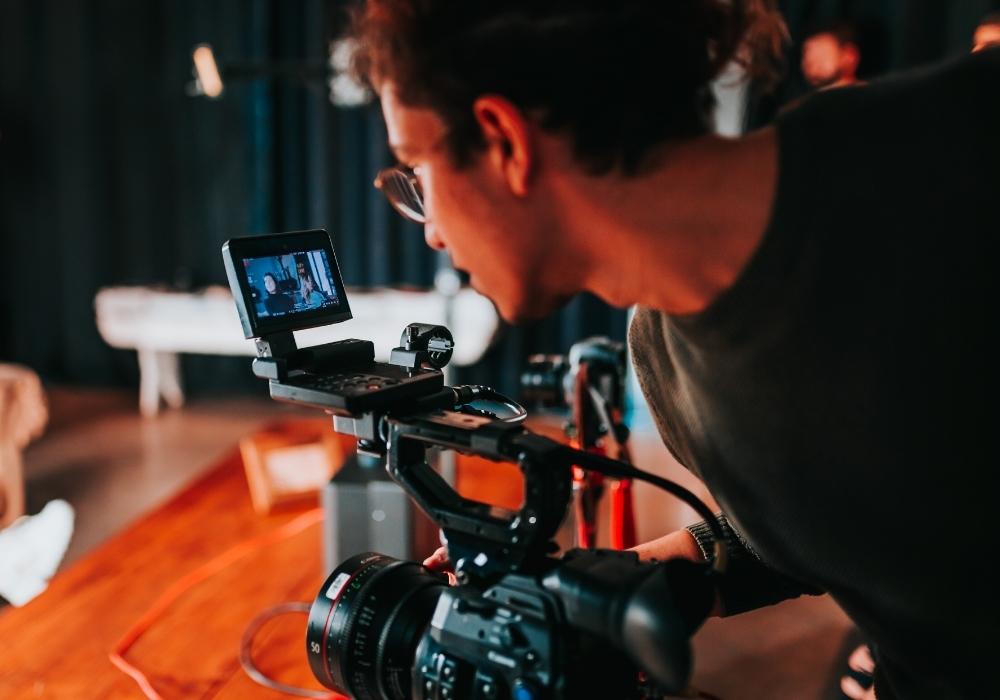Most colleges ask for a standard set of admissions materials: test scores, grades, essays, and letters of recommendation. Some schools, however, allow students to submit additional materials. What schools do this, and should you include them?
These materials are never necessary for admission but can add extra depth or perspective to your application. You should only include supplemental materials if you have something important to say; including them just to have done so will not get you any points, and may lose you some. In this article, we’ll cover Brown, MIT, UChicago, and Yale’s supplemental materials.
Brown Video Introduction
This can be submitted in place of a traditional interview, and much like a traditional interview shows admissions officers your voice and lets them know what you care about. If you are an engaging speaker, or you believe you would shine in an interview, or you want to show off your videography talents, then this is a good option for you.
Any video submitted must meet the following technical specifications:
- Under two minutes in length.
- The video must be uploaded directly through the applicant portal.
- The video must be uploaded before the deadline of the application cycle you chose, either ED or RD.
- Film in landscape.
- Begin your video by addressing the camera and stating your name and high school.
- Production quality is not evaluated.
There are no definitive topics, ideas, or material that Brown wants you to cover or include in your video. Instead, it should be unique to you, and tell admissions officers things they would not already know.
While you should be creative in your video, we advise you do the following:
- Dress casually, but deliberately. Don’t wear a suit, but also don’t wear clothing with inappropriate images or slogans.
- While production quality is not evaluated, you should make sure you are intelligible, and that viewers will be able to understand what you are saying. Doing multiple takes to ensure this may be necessary.
- Tell your audience something they would not know otherwise. This can be a narrative about you, discussions of an event, an exploration of a hobby, or cover some accomplishment. Avoid covering material mentioned elsewhere in your application.
- You can involve props, changes of background, and videographic tricks. This can be good if you wish to demonstrate your skills or passion for these topics.
- While the videos are normally dialogue focused, showing off other aspects of yourself, such as your ability to do backflips, can work well.
The video should above all demonstrate who you are authentically, and let admissions officers know how you will contribute to campus, and who you are as a person. This is a lot to cover in two minutes. You can’t tell them everything about you, so make sure whatever you do say is impactful.
MIT Creative Portfolio
MIT allows students to send in portfolios on several subjects, to demonstrate their achievements outside the classroom. Researchers, artists, and makers are all encouraged to submit portfolios. These are submitted through the application portal.
Research portfolios include an abstract of the research you completed and a letter of recommendation from your research mentor. You also complete a questionnaire about your research. If you have completed multiple research projects, choose whichever is most impressive or important to you.
Performing artists are allowed to submit photos or videos of their work. Videos should be solos, and total video time should be under ten minutes. You may also submit scripts or scores as pdfs; these should be shorter than ten pages total. Excerpting may be necessary for some students.

Visual artists may submit a portfolio. We discuss how to construct one of these in our guide for art students.
The maker portfolio exists to allow you to show off your hands-on, engineering, or design talents. The MIT Engineering Advisory Board reviews all maker portfolios. The portfolio can contain still images, up to two minutes of video, and a technical schematic. The goal is to show off what you created, and how it functions.
The purpose of all of these portfolios is to show off your skill and accomplishments outside of a classroom environment. The maker portfolio is unique to MIT, and reflects the school’s focus on engineering. These portfolios are not necessary, and you should not include something simply for the sake of having done so. If you have created something impressive, however, you should definitely show it off if possible.
UChicago Video Profile
In place of a traditional interview, you can instead submit a video essay to UChicago. While this isn’t ideal for all students, it is a good way to show your voice to admissions officers who otherwise would not hear from you. The video should be two minutes long or less.
You can either upload the video directly to your application portal or submit a link after uploading it to another site. The video should touch on topics not covered elsewhere in your application, and give admissions officers new information about you. Make sure you are intelligible in your video; it may be necessary to record multiple times to ensure this. You should also be presentable in your video; you don’t need to dress formally but avoid attire with inappropriate themes or slogans.
UChicago is a school that prides itself on its weird culture; their second essay question exemplifies this. Be willing to demonstrate your passions and creativity in this video. It should above all else be authentic to you; humorous if you are a funny person, more serious if you are stoic, and demonstrating something you care about. If you have any unique skills which are hard to convey in writing, this can be a chance to show them off as well.
While your skill as a videographer does not have to be the main focus, it can be. They do not expect a highly polished video, and recording on your laptop is fine. If you record the video on your phone, make sure it is done in landscape. Your video can be a single take or include cuts and edits. Any editing included should be done deliberately, and contribute to the message of the video.
Yale Supplemental Materials
Most students who are accepted to Yale only submit the required materials, and they caution that you should only include supplemental material if you have something worth demonstrating. If, however, you have remarkable accomplishments outside the classroom, you should consider including them in your application. Required materials receive more weight in the decision-making process, but supplements are considered. Yale accepts both art and research supplements.
Students submitting an art supplement may also complete a questionnaire to provide additional context. This is applicable for visual art, music performance, dance, or film. This questionnaire is available through the applicant status portal and is submitted separately from the piece itself. This questionnaire is not required, but we recommend you complete it if your art has meaning or context which enhances the viewing experience.
Art supplements have the following guidelines by genre:
- Visual arts supplements should eb a portfolio showing your skill as an artist and the breadth of your technique. You may include between five and eight pieces, one of which must be a drawing.
- Music supplements may be a recording of a performance or written sheet music. Yale music professors review these submissions, not admissions officers. Recordings should be around ten minutes at most, and cover two to three pieces in different styles and genres. Vocal performers need at least one piece in a foreign language. Whole pieces or movements are preferred to excerpts.
- A short film may be submitted as well. While there is no time limit requirement, under ten minutes is recommended. This is reviewed by Yale faculty in the film school, not admissions officers.
- Dance videos are reviewed by dance faculty, not admissions officers. Videos should be no more than fifteen minutes in length, and may include one or multiple pieces.
All art supplements should only be sent if they demonstrate a high level of technical skill and achievement for a high school student.
If you have completed advanced scientific or engineering research, you may submit a research paper or abstract through your admissions status portal after you submit your application. A full paper is generally more useful than an abstract. You may also invite a research mentor to submit a recommendation letter. If you were part of a larger group effort, clarify what and how you specifically contributed to the project on the form.
Students who have had their creative writing recognized at a regional or national level may also submit their work. They request that you select a carefully chosen short piece or four to five poems, rather than a longer manuscript or numerous poems. Your required application essays are the most important piece of writing that admissions officers will review. Your writing may be included in the additional information section or uploaded through the admissions status portal.

Final Thoughts
Many students have achievements outside the classroom that they struggle to properly show off through essays or activities lists. While these supplemental materials will not be relevant for all students, if you have accomplishments or achievements outside the norm for high school, these are a good place to demonstrate them.
If you want advice on creating or compiling supplemental materials, or on any other aspect of college admissions, schedule a free consultation with us to discuss it. We have helped students with every part of college admissions, and are always happy to hear from you.








